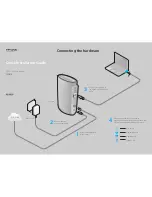
Modes and Configurations
40
V.34bis Series Standalone & Rackmount Modems
Busy-Out
Busy-Out is typically used in applications where multiple modems are used
in a pooling environment and all incoming calls must be accounted for. If a
modem goes bad, it may block all other modems "behind" it from receiving
calls if not made busy. By enabling Busy-Out, the rotary group will "skip"
the bad modem and go to the next available modem.
Conditions that will cause a modem "busy-out" to occur include:
1. The modem power-up self-test failed.
2. No +5v power supplied to the modem.
3. The modem rings 5 times without going off hook (this might occur if no
DTR signal is present).
4. The modem answered 5 consecutive incoming calls without
successfully connecting with the remote modem. This might occur if
the DSP is defective or the phone line is connected to the wrong jack.
Note:
1) Jumpers J-12 and J-13 must be put in the ON position
2) When a modem busy-out condition occurs the DTR, DSR, CD,
CTS, SQ, ERR, TST and speed LEDs will flash continuously.
Non-flashing LEDs will indicate the type of failure that has
occurred:
DSR
Ring without answer
CD
Failed power-up self-test
CTS Failed
answer
handshake
Summary of Contents for V.34bis series
Page 10: ...Introduction 6 V 34bis Series Standalone Rackmount Modems ...
Page 22: ...Installation 18 V 34bis Series Standalone Rackmount Modems ...
Page 40: ...Modes and Configurations 36 V 34bis Series Standalone Rackmount Modems ...
Page 65: ...Modes and Configurations V 34bis Series Standalone Rackmount Modems 61 ...
Page 118: ...AT and V 25bis Command Sets 114 V 34bis Series Standalone Rackmount Modems ...
Page 128: ...S Registers 124 V 34bis Series Standalone Rackmount Modems ...
Page 150: ...Index 146 V 34bis Series Standalone Rackmount Modems ...
















































